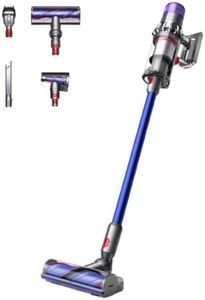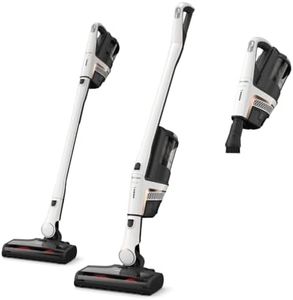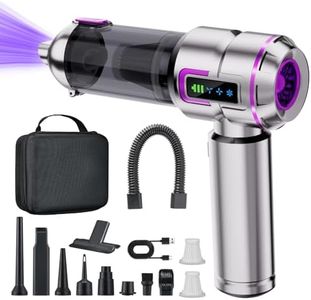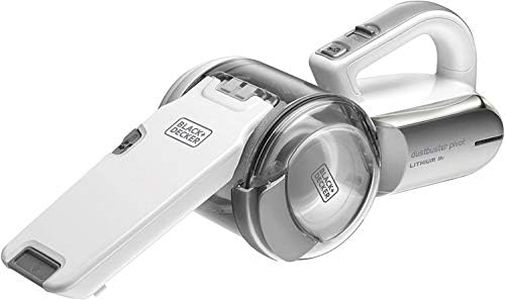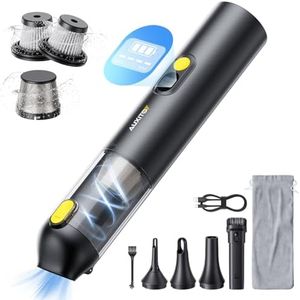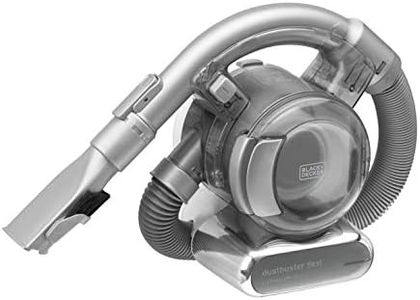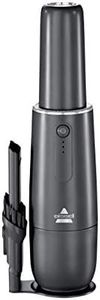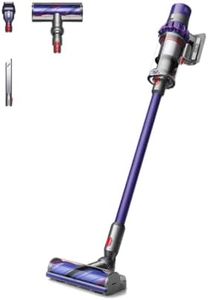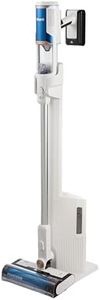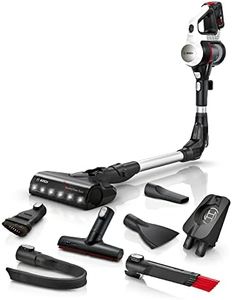We Use CookiesWe use cookies to enhance the security, performance,
functionality and for analytical and promotional activities. By continuing to browse this site you
are agreeing to our privacy policy
10 Best Handheld Cordless Vacuums
From leading brands and best sellers available on the web.Buying Guide for the Best Handheld Cordless Vacuums
Choosing a handheld cordless vacuum can really improve your cleaning routine, especially if you want something lightweight, portable, and easy for quick cleanups. To make the best choice, it's helpful to understand the main features and specs that affect how the vacuum will fit into your lifestyle. Think about what you'll use it for most: small messes, pet hair, cars, or stairs. Knowing your main needs will help you focus on the specs that matter most for you.Battery LifeBattery life refers to how long the vacuum can run on a single charge. This is important because it determines how much cleaning you can do before needing to recharge the battery. Battery life is usually measured in minutes, and most handheld cordless vacuums range from around 10 to 40 minutes per use. Shorter battery life is fine for very quick tasks like cleaning up a small spill, while longer battery life is better if you plan to clean a car or several rooms at once. If you expect to use the vacuum for just a few minutes at a time, a shorter battery life isn't a problem. But if you want to tackle bigger jobs, go for one with a longer runtime.
Suction PowerSuction power is how strong the vacuum pulls in dirt and debris. It's important because stronger suction means more effective cleaning, especially for stubborn dirt or pet hair. Suction power is often measured in air watts or just described as high/low by the manufacturer. Lower suction is acceptable for picking up light debris on hard floors, but if you have carpets, pets, or want to get into car interiors, higher suction is preferable. Think about the surfaces and types of messes you'll face most often when deciding how much suction you need.
Dustbin CapacityDustbin capacity is the amount of dirt the vacuum can hold before you need to empty it. This matters because a small dustbin may need to be emptied frequently, which can be inconvenient during longer cleaning sessions. Most handheld vacuums have fairly small capacities, from about 0.3 to 0.7 liters. For quick cleanups, a lower capacity is not a big issue. But if you expect to clean larger areas or deal with lots of pet hair, a larger capacity will save you trips to the trash can.
Weight and ErgonomicsWeight and ergonomics refer to how heavy the vacuum feels and how comfortable it is to hold and use. This is crucial if you plan to use the vacuum for extended periods or have limited strength or mobility. Lightweight models are easier to hold, especially for overhead or awkward cleaning jobs. Some vacuums have handles or shapes designed to be more comfortable. Consider how long you’ll be holding the vacuum and whether you’ll be using it above your head or in tight spots to decide if you need a lightweight, well-designed device.
Attachments and AccessoriesAttachments and accessories are extra tools that come with the vacuum, like brushes or crevice tools. They're important because they expand what the vacuum can do, for example, picking up pet hair from upholstery or cleaning tight corners. Some vacuums come with only a few basic accessories, while others offer a variety for different surfaces and needs. If you know you'll be cleaning cars, furniture, or delicate surfaces, look for a vacuum that includes the specific attachments you’ll use most.
Charging TimeCharging time is how long it takes to recharge the vacuum's battery after use. It's relevant if you plan to use the vacuum frequently throughout the day. Charging can take anywhere from under two hours to over five hours depending on the model. If you don’t mind waiting between uses, longer charging times are not a problem. But if you need the vacuum available for repeated quick tasks, look for one with faster charging or features like removable batteries.
Filter SystemThe filter system is what traps dust and tiny particles inside the vacuum so they don’t escape back into the air. This is important if anyone in your home has allergies or asthma. Basic filter systems are fine for regular cleaning, but high-efficiency filters (like HEPA) are better for trapping allergens and fine dust. Decide how sensitive you are to dust and allergens when picking the filter type; if allergies are a concern, aim for a vacuum with a more advanced filter system.
